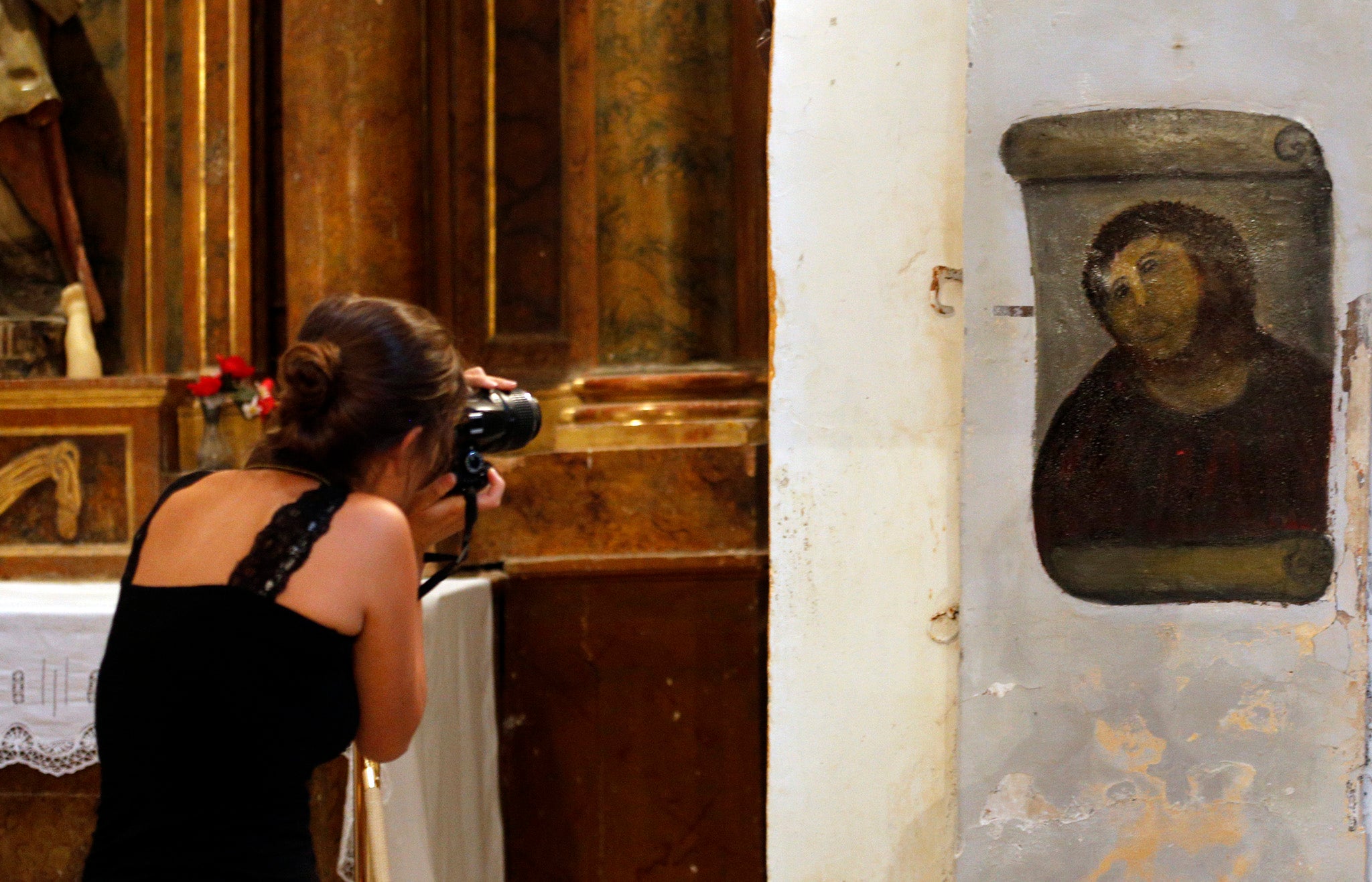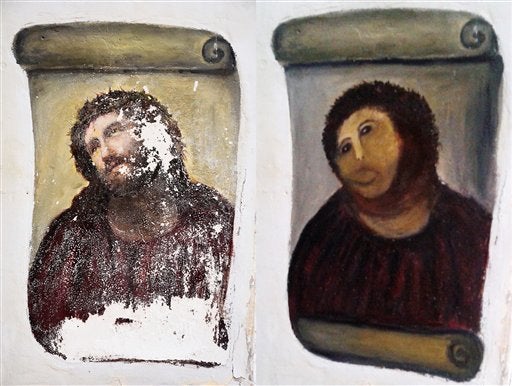The Independent's journalism is supported by our readers. When you purchase through links on our site, we may earn commission.
Spanish town saved by botched restoration of century-old Christian 'Ecce Homo' fresco of Jesus
Cecilia Giménez's restoration of the 'Ecce Homo' in 2012 provoked international attention as art critics and lovers despaired over her work

Your support helps us to tell the story
From reproductive rights to climate change to Big Tech, The Independent is on the ground when the story is developing. Whether it's investigating the financials of Elon Musk's pro-Trump PAC or producing our latest documentary, 'The A Word', which shines a light on the American women fighting for reproductive rights, we know how important it is to parse out the facts from the messaging.
At such a critical moment in US history, we need reporters on the ground. Your donation allows us to keep sending journalists to speak to both sides of the story.
The Independent is trusted by Americans across the entire political spectrum. And unlike many other quality news outlets, we choose not to lock Americans out of our reporting and analysis with paywalls. We believe quality journalism should be available to everyone, paid for by those who can afford it.
Your support makes all the difference.A Spanish town has undergone a miraculous recovery after a well-meaning pensioner accidentally destroyed a century-old fresco of Jesus Christ, prompting international mockery.
Cecilia Giménez, 83, attempted to restore the century-old 'Ecce Homo' fresco of Jesus crowned with thorns in the Roman Catholic Church of Santuario de la Misericordia, in the small town of Borja, Spain back in 2012.
Although authorities initially suspected vandalism, Mrs Gimenez eventually came forward to confess she had attempted to restore her “favourite” painting after she became upset at the flecked and peeling paint.
In a twist of fate, the action – thought to have spelt the end for Elías García Martínez artwork – has inadvertently provided a massive tourism boost for the 5,000-strong town and has even inspired a comic opera.

The opera’s librettist Andrew Flack - who travelled to Borja to research the project -described events as “a miracle”.
“For me, it’s a story of faith,” he told the New York Times.
Since Mrs Giménez ‘restoration’ more than 150,000 tourists have visited the town in order to see the painting on the walls of the small church – which charges a euro to enter – behind a clear plastic screen.
“Why are people coming to see it if it is such a terrible work of art?” he added. “It’s a pilgrimage of sorts, driven by the media into a phenomenon. God works in mysterious ways. Your disaster could be my miracle.”
This Christmas the new and improved 'Ecce Homo' is stamped on local lottery tickets, has been featured in a small film, and made the good-natured restorer into a local celebrity.
The fame of the painting has stabilised the economy in the town, which had seen 300 jobs vanish in the economic downturn gripping Spain.
Join our commenting forum
Join thought-provoking conversations, follow other Independent readers and see their replies
Comments